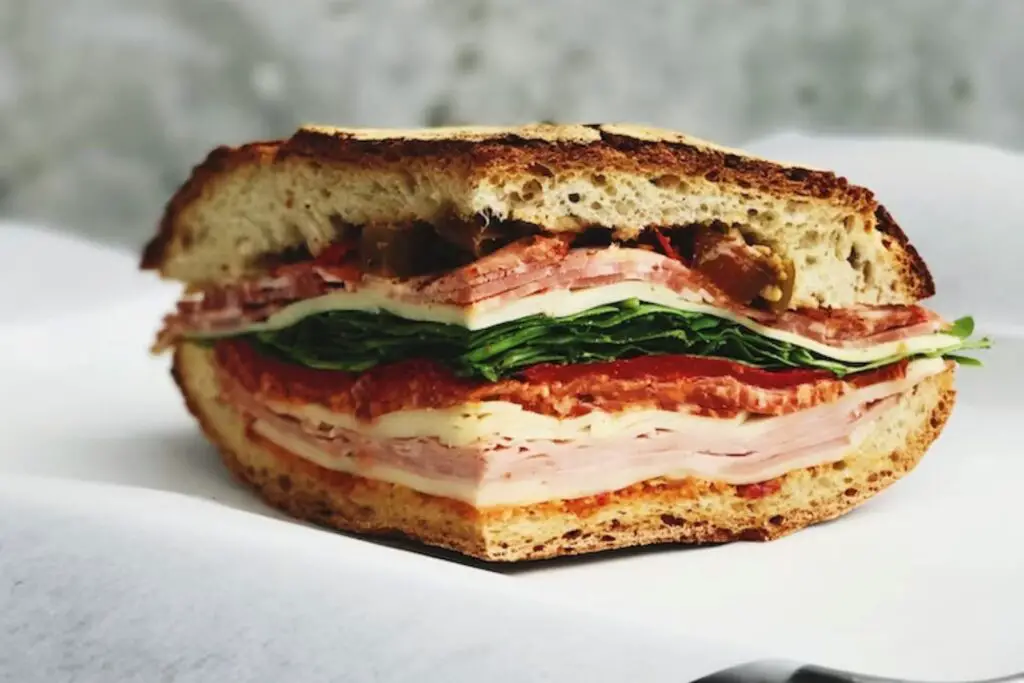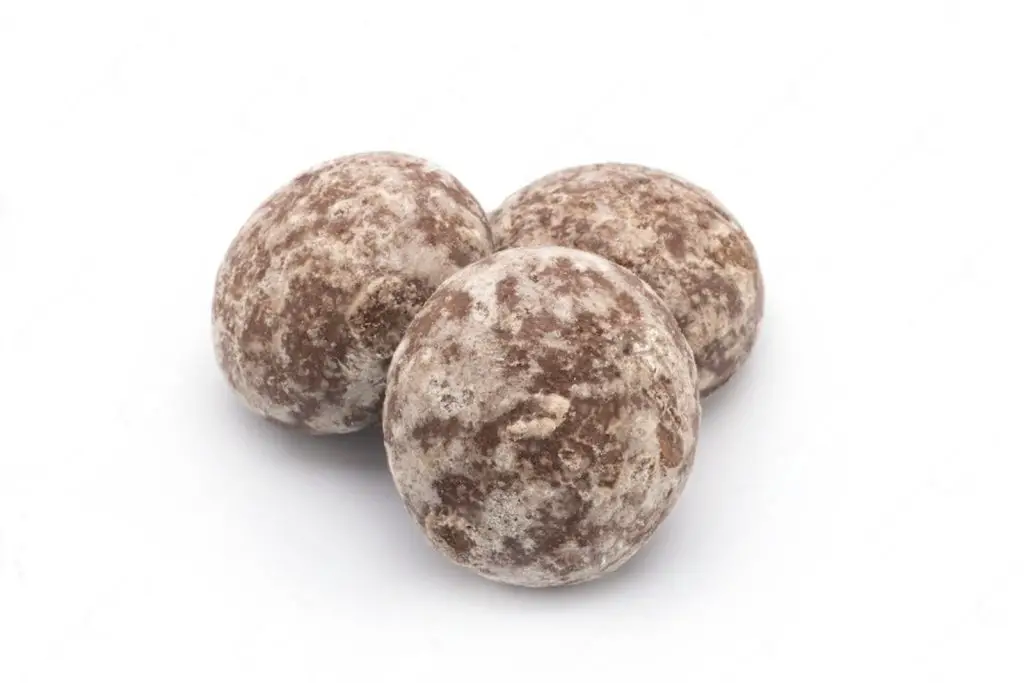
Crème brûlée is a classic French dessert known for its rich and creamy texture, topped with a layer of caramelized sugar. It is a favorite among dessert lovers and is often served in high-end restaurants. If you find yourself with leftover crème brûlée or simply want to prepare a batch in advance, freezing is a convenient option to preserve its delectable taste and smooth consistency. By following a few simple steps, you can freeze crème brûlée successfully and enjoy it at a later time. This article provides a comprehensive guide on how to freeze crème brûlée while maintaining its exquisite flavor and texture.
Here’s a guide on how to freeze crème brûlée:
Step 1: Prepare fresh crème brûlée
To begin the process of freezing crème brûlée, it’s essential to start with a fresh batch of this delectable dessert. Making your own crème brûlée allows you to customize the flavors according to your preferences. You can stick to the classic vanilla flavor or get creative by infusing it with chocolate, fruit, or other enticing ingredients.
When preparing the custard, it’s crucial to ensure it is properly cooked and set before freezing it. This involves following the recipe carefully, paying attention to cooking times and temperatures. The custard should be silky smooth and firm, with a creamy texture that will hold up well during the freezing and thawing process.
By making the crème brûlée from scratch, you have control over the ingredients and can adjust the sweetness and flavor to suit your taste. This allows you to create a dessert that is truly satisfying and enjoyable to eat even after it has been frozen.
It’s important to note that crème brûlée with additional toppings like caramelized sugar may not freeze well, as the texture and appearance of the topping can be compromised during the freezing and thawing process. It’s best to freeze the custard portion of the dessert and add the caramelized sugar layer just before serving.
Can I freeze homemade crème brûlée as well as store-bought?
Yes, you can freeze both homemade crème brûlée and store-bought versions. The freezing process is applicable to both types. However, it’s important to note that the quality of the homemade crème brûlée might be slightly better, as it is freshly made and doesn’t go through additional processing. Proper packaging and storage techniques are key to preserving the taste and texture of both homemade and store-bought crème brûlée during freezing.
Step 2: Allow the crème brûlée to cool
After baking the crème brûlée, it’s important to allow it to cool completely before freezing. This step is crucial to prevent condensation from forming on the surface of the custard, which can negatively affect the texture and quality of the dessert during the freezing process.
When the crème brûlée is removed from the oven, it is still relatively warm. If it is immediately placed in the freezer while it is still hot, the temperature difference between the hot custard and the cold freezer can cause condensation to form on the surface. This condensation can lead to ice crystals forming on the custard, resulting in a grainy texture and loss of flavor.
By allowing the crème brûlée to cool at room temperature, you give it time to release any excess heat and moisture. This gradual cooling process helps to maintain the creamy and smooth consistency of the custard. It also allows the flavors to meld together, enhancing the overall taste of the dessert.
During the cooling process, it’s important to avoid exposing the crème brûlée to any drafts or humid environments that could promote condensation. Place it on a heat-resistant surface, such as a wire rack, to allow air to circulate around the ramekins or dishes.
Step 3: Portion the crème brûlée
Once the crème brûlée has cooled completely, it’s time to divide it into individual serving portions. This step is essential to make the thawing and serving process more convenient and efficient when you’re ready to enjoy the frozen dessert.
Dividing the crème brûlée into individual portions allows you to thaw and serve only the amount you need at a given time, without having to thaw the entire batch. It helps minimize waste and ensures that each serving retains its original quality.
Ramekins are commonly used for serving crème brûlée, and they work perfectly for portioning the dessert before freezing. Make sure the ramekins you use are freezer-safe to withstand low temperatures. Alternatively, you can also use other freezer-safe containers or even resealable freezer bags, depending on your preference and the available options.
When portioning the crème brûlée, fill each ramekin or container to a suitable serving size. It’s generally best to fill them about 2/3 to 3/4 full, leaving some space at the top to accommodate any expansion that may occur during freezing. This extra space helps prevent the containers from cracking or bursting in the freezer.
Consider the number of servings you typically prefer and adjust the portion sizes accordingly. This way, you can easily retrieve individual servings without having to thaw more than necessary, allowing you to enjoy the crème brûlée at your own pace.
Step 4: Cover and protect
After portioning the crème brûlée into individual servings, it’s crucial to cover each portion tightly to protect it while in the freezer. This step is essential for maintaining the quality, texture, and flavor of the dessert.
To cover the portions, you can use either plastic wrap or aluminum foil. The goal is to create an airtight seal around each container to prevent freezer burn and the absorption of any unwanted odors.
Freezer burn occurs when the surface of food becomes dehydrated due to exposure to air in the freezer. It can result in a dry, tough texture and a loss of flavor. By tightly covering the crème brûlée with plastic wrap or aluminum foil, you create a barrier that helps retain moisture and prevents the custard from drying out.
In addition to freezer burn, odors from other foods in the freezer can potentially transfer to the crème brûlée, affecting its taste. Airtight covering prevents the absorption of these unwanted odors, preserving the authentic flavor of the dessert.
When covering each portion, ensure that the plastic wrap or aluminum foil is pressed directly onto the surface of the custard, leaving no gaps or exposed areas. This helps minimize contact with air and maintains the integrity of the crème brûlée.
It’s also recommended to place the covered portions on a tray or in a freezer-safe container to prevent them from shifting or getting crushed in the freezer. This extra layer of protection ensures that the crème brûlée remains undisturbed during freezing and helps maintain its shape.
Step 5: Arrange in the freezer
Once the crème brûlée portions are tightly covered, it’s time to arrange them in the freezer for optimal freezing and convenient storage. This step involves placing the individual servings in a single layer on a baking sheet or tray.
Arranging the crème brûlée portions in a single layer allows for even freezing. It ensures that the cold air circulates around each portion, promoting uniform freezing and preventing any uneven textures or ice crystal formation. This way, each serving will maintain its original creamy consistency and taste when thawed.
Using a baking sheet or tray also makes it easier to handle and transport the crème brûlée portions to the freezer. It provides a flat and stable surface that prevents the containers from tipping over or sticking together during freezing.
It’s important to leave enough space between each portion to prevent them from sticking together as they freeze. If the containers are placed too close to each other, they may freeze together, making it challenging to separate and thaw individual servings later on. Leaving adequate space ensures that each portion remains separate and intact.
Step 6: Freeze the crème brûlée
After arranging the covered crème brûlée portions in a single layer on a baking sheet or tray, it’s time to transfer them to the freezer and allow them to freeze completely. This step, known as flash-freezing, is crucial for maintaining the integrity of the custard and preventing the formation of ice crystals.
Flash-freezing refers to the process of rapidly freezing food items at a very low temperature. By freezing the crème brûlée quickly, you minimize the formation of large ice crystals that can affect the texture and quality of the dessert.
Placing the baking sheet or tray with the crème brûlée portions in the freezer ensures that they freeze evenly and efficiently. The cold air in the freezer circulates around each portion, gradually lowering the temperature and transforming the custard into a solid state.
The duration required for freezing the crème brûlée can vary depending on factors such as the size of the portions and the temperature of the freezer. Generally, it’s recommended to freeze them for a few hours until they are completely solid. However, it’s always best to check on them periodically to ensure they are frozen through.
By flash-freezing the crème brûlée, you maintain the original texture and consistency of the custard. The quick freezing process minimizes the formation of large ice crystals that can result in a grainy or icy texture. Instead, the custard will remain smooth and creamy, ready to be thawed and enjoyed later.
Step 7: Package and seal
After the crème brûlée portions have been frozen solid, it’s time to package them properly for long-term storage in the freezer. This step involves transferring the portions from the baking sheet or tray into airtight freezer-safe containers or resealable freezer bags.
Using airtight containers or freezer bags is essential to protect the crème brûlée from freezer burn and to maintain its quality over time. These containers create a barrier against air and moisture, preventing any unwanted changes in texture or taste.
Remove the frozen crème brûlée portions from the baking sheet or tray, ensuring they remain intact. Place them carefully into the airtight containers or freezer bags, making sure there is enough space to accommodate each portion without crushing or damaging them.
Labeling the containers with the date of freezing is highly recommended. This simple step allows you to keep track of the storage time and ensures that you use the oldest portions first. It helps you maintain the best quality and freshness of the crème brûlée, as it’s recommended to consume frozen desserts within a certain time frame for optimal taste.
If using freezer bags, squeeze out as much air as possible before sealing them. This helps minimize the potential for freezer burn and keeps the crème brûlée well-preserved.
Properly packaging and sealing the frozen crème brûlée portions provides additional protection against moisture loss and exposure to other flavors in the freezer. It maintains the quality of the dessert and makes it easier to handle and retrieve individual servings when needed.
Remember to store the labeled containers in a designated section of the freezer, where they won’t be disturbed or subjected to temperature fluctuations. This dedicated storage space ensures the crème brûlée remains undisturbed and maintains its excellent taste and texture until you’re ready to enjoy it.
Step 8: Store in the freezer
Once the crème brûlée portions are properly packaged and sealed, it’s time to store them in the freezer. The way you position and store them in the freezer is essential for maintaining the quality and integrity of the dessert.
Choose a stable position in the freezer where the crème brûlée portions can be placed without the risk of tipping over or being crushed. It’s advisable to find a dedicated area or shelf where they can be stored, separate from other food items.
Avoid placing the crème brûlée portions near the freezer door or in areas where they may be subject to temperature fluctuations. These fluctuations can lead to inconsistent freezing and compromise the quality of the dessert. Instead, opt for a more stable section of the freezer, such as the middle or back, where the temperature remains relatively constant.
Storing the crème brûlée portions in a dedicated area also helps prevent them from being accidentally moved or disturbed when retrieving other items from the freezer. This ensures they remain intact and undisturbed, maintaining their original shape and texture.
Additionally, make sure there is sufficient space around the packaged portions to allow for proper air circulation within the freezer. Adequate air circulation helps maintain consistent freezing temperatures and prevents the formation of ice crystals or condensation on the crème brûlée.
Remember to close the freezer door gently and avoid excessive opening and closing to maintain a stable temperature inside. Frequent fluctuations in temperature can impact the quality and texture of the frozen crème brûlée.
How long can crème brûlée be stored in the freezer?
Crème brûlée can be stored in the freezer for up to 2 to 3 months without significant loss in quality. However, it is important to note that the longer it is stored, the more its texture and flavor may be affected. To maintain the best quality, it is recommended to consume or use the frozen crème brûlée within the first couple of months. Proper packaging and storage techniques, such as using airtight containers or wrapping it tightly with plastic wrap, can help extend its freezer shelf life.
Step 9: Thaw and enjoy
When the time comes to indulge in your frozen crème brûlée, it’s important to follow the proper thawing process to preserve its texture and flavor. Thawing the dessert slowly and gently is the key to achieving the best results.
To thaw the crème brûlée, remove the desired number of portions from the freezer and transfer them to the refrigerator. Placing them in the refrigerator allows for a gradual thawing process, which helps maintain the custard’s creamy texture and prevents any undesirable changes in flavor.
It’s recommended to thaw the crème brûlée overnight or for several hours in the refrigerator. This slow thawing process allows the dessert to defrost evenly and consistently. Rushing the thawing process by using methods like the microwave or hot water bath can result in uneven thawing and may affect the dessert’s overall quality.
Avoid leaving the crème brûlée at room temperature for extended periods or using higher temperatures to thaw it quickly. Sudden temperature changes can lead to the growth of bacteria, compromise the texture of the custard, or result in the development of an undesirable consistency.
By allowing the crème brûlée to thaw slowly in the refrigerator, you ensure that it retains its silky smooth texture and delectable taste. The gradual thawing process allows the custard to rehydrate naturally without compromising its integrity.
Once the crème brûlée has thawed completely, it’s ready to be enjoyed. You can serve it chilled directly from the refrigerator, or if desired, you can briefly let it come to room temperature before serving to enhance the flavors.
Remember to discard any portions that have been thawed and then refrozen, as this can negatively affect their quality and safety.
Other related questions
Can I refreeze previously thawed creme brulee?
It is generally not recommended to refreeze previously thawed crème brûlée. Each time a dessert goes through the freeze-thaw cycle, its texture and quality may deteriorate further. Additionally, refreezing can increase the risk of bacterial growth and compromise food safety. To avoid waste, it is best to portion the crème brûlée appropriately before freezing and only thaw what you intend to consume.
How do I know if my frozen creme brulee has gone bad?
To determine if your frozen crème brûlée has gone bad, consider the following signs: Appearance: If you notice any unusual discoloration, ice crystals, or significant separation of liquids, it may indicate spoilage. Texture and Consistency: If the crème brûlée has become excessively watery, curdled, or has an off-putting texture, it is likely no longer suitable for consumption. Odor: A strong, unpleasant odor is a clear indication of spoilage. If the crème brûlée smells sour, rancid, or moldy, it should be discarded. If you observe any of these signs, it is best to err on the side of caution and discard the frozen crème brûlée to avoid any potential foodborne illnesses.
Can I use frozen creme brulee with the fresh ones?
While it is technically possible to use frozen crème brûlée alongside fresh ones, there may be noticeable differences in texture and quality. The freezing and thawing process can affect the smoothness and creaminess of the dessert, resulting in a slightly different mouthfeel. Additionally, the caramelized sugar topping on the frozen crème brûlée may not have the same crispness as the freshly torched ones. It is generally recommended to serve frozen crème brûlée separately or consume it separately to avoid compromising the overall dining experience.
Can I freeze crème brûlée without affecting its taste and texture?
Freezing crème brûlée can affect its taste and texture to some extent. The custard may become slightly denser and the texture might not be as creamy and velvety as when it’s freshly made. Additionally, the caramelized sugar topping may lose its crispness after freezing and thawing. While the overall flavor can still be enjoyable, it’s important to note that freezing may result in slight changes to the taste and texture of the dessert.
Will the caramelized sugar topping remain intact after freezing?
The caramelized sugar topping on crème brûlée is delicate and prone to moisture absorption, which can affect its integrity when frozen. The freezing and thawing process can cause the sugar to become soft and lose its crisp texture. As a result, it is unlikely that the caramelized sugar topping will remain intact and maintain the same desirable crunchy texture after freezing.








